After working as a Peace Corps Volunteer (PCV) in Cameroon for over a year, I am now able to reflect on at least three main settings where I have engaged in group work. It is only through this type of work that I feel our job as rural development agents can be replicated by other members of the community in a sustainable manner. Every volunteer will have a different experience in working with groups because of the inherent distinctions between Cameroonian tribes and regional climate variation. Each tribe speaks a different dialect in a country where there are over 260 of them within 10 regions which differ greatly in natural resource availability and climactic vulnerability. The U.S. Peace Corps decides where PCVs will be placed, along with the person, NGO, or group we will work with for the next two years. I was assigned to work with one counterpart and his NGO, meaning group work would only come with time and with the necessary guidance from my work partner. Starting service with one counterpart and attempting to build passages to find new colleagues, motivated me enough to work on upcoming projects, and gave me plenty of work for my 27-month stay as a PCV.

The first setting relates to the work my counterpart and I do by teaching environmental education in primary schools and conducting environmentally focused sensitization meetings with individual farmers. The groups we now work with continuously were found through workshops. After some evaluation, only those who showed interest and commitment were those we selected to work with in the future.
The second setting where I have been able to engage in capacity-building work with a group is through the creation of a support or care group for People Living with HIV/AIDS, more specifically women and youth in the surrounding areas.
The third setting where I have taken on collective and organizational group work is through my involvement in a 5-village water project I inherited from a previous volunteer.
Every setting is unique in the sense that no group work is initiated in the same way, some more premeditated and organized than others and some groups are willing to put more of their own time into the progress of the group or of a given project.
The uniqueness is also highlighted by the way in which a volunteer interacts with the various actors within the group. Generally, as PCVs, we are not supposed to be the sole actor or initiating agent so as to ensure sustainability in a project. Thus, often times we become the intermediary instrument connecting a variety of actors or groups to one another in ways which were not easily detectable on their own. Our role in generating group connections becomes apparent only after developing community needs assessments, feasibility studies or gathering analytical observations from individual or group discussions.
In all three settings discussed herein, environmental issues play a heavy role in the importance of pursuing each project and in pushing the actors to accomplish the goals of the same through collective action.
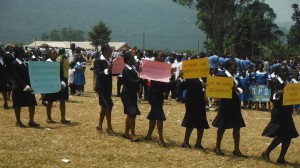
The first setting is directly related to the teaching of environmental topics, such as environmental theory and how our world may have developed into the world we see now; also, the dialogue between conservation and development issues in developing nations, along with a final component on positive community action in a given area. Along with my counterpart’s goals with his NGO, Community Action for Development, and the beliefs I’ve developed through my education at Bard CEP and elsewhere, we place utmost importance on children and their potential to aid in reducing the future backlash of delaying current positive environmental action.
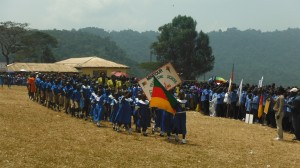
The “pikins” (children in Pidgin) of today will play a larger role in the sustainable environmental development of tomorrow. Therefore, teaching to over 160 pikins in grades 4, 5, and 6, as well as teaching 202 future primary school teachers, on my own time, we are directly tackling growing populations.
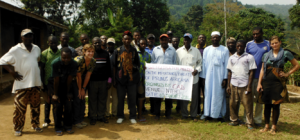
On another strand of environmental education, we conduct sensitization meetings on conservation, income generation and sustainable development, which are presented to farmers, ranging from their late 20’s to late 50’s, who are yet to uncover their own organizational potentials. By providing the skills and knowledge we were trained on to these individuals, we expect collective environmental action to come forth as we outline our project goals and expected outcomes, which tend to be in alignment with some of their own ideals.
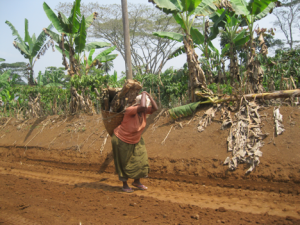
The PCVs role in capacity building is one that I find to be the most fulfilling, both personally and collectively. When a group consists of 4-10 people, like that of the women’s PLHIV group we work with, I feel the impact we make is greater on the individual than on the nation-wide level. In order to initiate the group, my post-mate and I first had to find hospital staff interested in tackling HIV/AIDS patients facing the worst stigma I have ever encountered. Also, finding those who may be interested in attending a meeting in a secret location, despite knowing they would come face-to-face with patients experiencing similar health conditions and ostracism from society, is no easy task. Only Community Relay Agents in contact with those patients getting their monthly Anti-Retroviral treatment in the area would be able to share the meeting date and location. Hence, this group setting tackles the social limitations of vulnerable people and the environmental framework (the surroundings) they are forced to face and challenged to succeed in. Some examples of the environmental hardships the farming populations face in the area are: lack of access to markets and manufacturing entities for their abundant raw materials and produce, in part due to the poor state of the roads and the general lack of infrastructure, combined with the lack of accurate nutritional and medical education.
Now, increasing the attendance of young women and aiding in forming a self-sustaining group is our next challenge, since women in the area bear the toughest workloads, both in the farm as cultivators and harvesters, as well as, at home doing all of the cooking, caring for the husbands and children and keeping the compounds clean. Thus, by targeting women, we expect the support provided within the group, along with the trainings on health, nutrition and income generating activities, will help to empower women not only individually but also collectively.
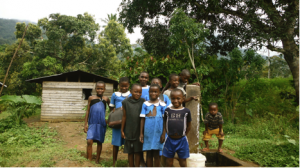
The third group setting, the water project, has involved more internationally focused, actor linking techniques as a means to initiate cooperation in a previously intermixed group of actors. Three years worth of intermixing, hundreds of attempts to encourage the collective action of 5 villages; 1 international and 1 local NGO, 1 rural development association, numerous funding entities and countless technicians in and out of a project that has yet to be finished…why was acquiring pipe-borne water not a sufficiently compelling aspiration to bring people to work together efficiently? Too many actors? Perhaps. Not working with the right entities on the ground? Partially also so. Working with an NGO versus an individual? The overall plan needed to be clear since the beginning to avoid confusion. Who are the international actors? Is this project really going to succeed? What do these funders really expect from us? These are just a few of the many questions my counterpart, as a local and a member of the association, and myself, as a local volunteer, receive on a weekly basis.
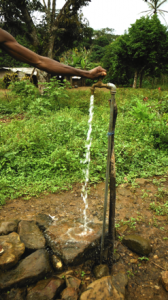
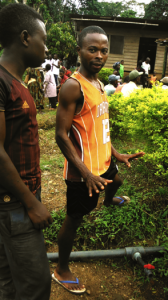
The confusion exists. The disappointment exists. Both are ubiquitously felt on the ground and abroad. As volunteers we (because this project has gone through the hands of 2 volunteers thus far) are expected to handle the money and the logistics of buying and delivering the materials, but the added component of responding to all village inquiries on behalf of a foreign NGO could be, for instance, the job of a local NGO already present in the venture or that of locally hired personnel. However, it may also just be another challenge of working to link groups to make a collective effort, provided the many stumps along the way and making do with the present environmental conditions mentioned above yet increased by 2, exponentially.
In the spirit of a numbers game, too many players and potentially not the right ones, at times may have contributed to competition and lack of comprehension of the strategies and goals. Accepting a permanent correlation with the fact that every community experiences diverse environmental and developmental difficulties, that some are more welcoming to inedible* funding from foreigners and that some are more willing to take time from cultivating and harvesting mono-crops and work towards self-improvement, is taking a lead in the numbers game. By accepting these challenges, it can help in planning better strategies for future projects while ensuring the sustainable development component in any project in the area.
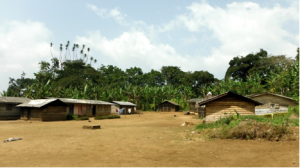
As volunteers, we are, at times, the only link between Cameroon and the “Western” world. However, it is each community, the way villages interact in the company of one another, the way they learn to interact with the funding and managing actors, along with how confusion is settled and links are maintained in the project’s show-ground, that successful links, in any given venture, can truly be realized. Our position as PCVs is that of an intermediary working towards individual capacity-building and striving for collective action amidst the many actors pushing to be in the numbers game, but with no intention of being the central figure. This is crucial to the eventual sustainability of any project in which we participate.
Collective environmental action thus includes aspects of populations dealing with different social and infrastructural needs, along with differences relating to the necessary balance between conservation and developmental needs in a given village. So, striving to work in one direction (i.e. with a clear vision of the steps needed to be taken to achieve the main goal) without acknowledging that a project can pull in many different directions throughout its course, is not sufficient for inspiring local populations towards self-development. The stock of costs, actors, confusions and disappointments arising during the delivery of a given project, stems from a lack of clarity and transparency of how the project can be carried-out. Thus, having a wider spectrum of the many complexities one could encounter during that time, with regards to the language and culture of the communities involved and the pertinent environmental factors affecting the same, would only help to decrease the stock by diffusing the number of problems that could potentially surface before the launching a project.

From working with 1 counterpart and 1 NGO to currently working with 362 students through environmental education, over 125 farmers on conservation and development initiatives, roughly 8,500 individuals in 5 different villages, 1 foreign NGO, and 1 development association on a water project, and the countless efforts to work with more individuals on other projects, my work here is far from finished and I have at least another 10 months to attempt at playing a significant role in this numbers game and none of it would be possible without the guidance and coaching of those around me.
*Money, when edible in Cameroon, means it can be corruptly taken or immorally taken, whichever you prefer.
